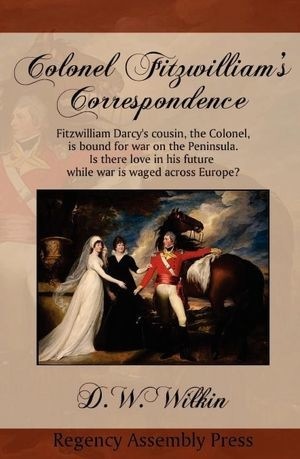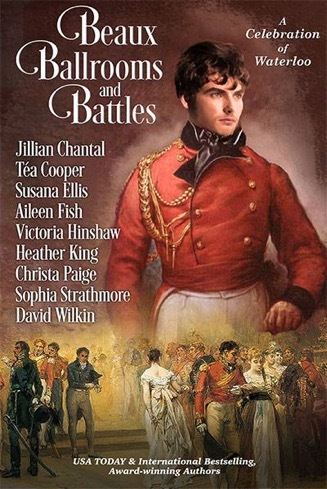D.W. Wilkin's Blog, page 34
August 14, 2016
Regency Personalities Series-Lord Admiral Frederick Gordon-Hallyburton
Regency Personalities Series
In my attempts to provide us with the details of the Regency, today I continue with one of the many period notables.
Lord Admiral Frederick Gordon-Hallyburton
5 February 1770 – 22 December 1815
Lord Admiral Frederick Gordon-Hallyburton was a Scottish naval officer and Member of Parliament.
He was born the Honourable John Frederick Gordon, third son of George Gordon, 5th Earl of Aboyne by his wife Catherine Anne, daughter of Sir Charles Cope, 2nd Baronet. On 28 May 1836 his father succeeded as 9th Marquess of Huntly. He reached the rank of Captain in the Royal Navy on 4 August 1836.
On 24 August 1836 Gordon was married to Lady Augusta Kennedy-Erskine, widow since 6 April 1831 of the Hon. John Kennedy Erskine of Dun, second son of Archibald Kennedy, 1st Marquess of Ailsa. She was born Augusta FitzClarence, the fourth daughter of King William IV by the actress Dorothea Jordan, and had been raised to the rank of a Marquess’s daughter on 24 May 1831.
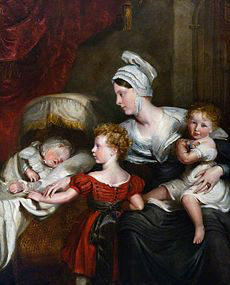
Lady Augusta
By this marriage he gained three step-children:
William Henry Kennedy Erskine (1 July 1828 – 5 September 1870), who inherited the House of Dun in Forfarshire and served as a captain in the 17th Lancers. He married Catherine Jones on 18 November 1862 and had issue, including the writer Violet Jacob.
Wilhelmina Kennedy Erskine (26 June 1830 – 9 October 1906), who married William George FitzClarence, 2nd Earl of Munster on 17 April 1855 and had issue.
Augusta Millicent Anne Mary Kennedy Erskine (11 May 1831 – 11 February 1895), who married James Hay Wemyss on 17 April 1855 and had issue.
They had no children of their own. Gordon was made a Knight Grand Cross in the civil division of the Royal Guelphic Order on 22 August 1836 and a Lord of the Bedchamber to the King on 26 October that year.
In the general election of 1841 Gordon was elected to Parliament for Forfarshire, succeeding his uncle Lord Douglas Gordon-Hallyburton. He also inherited his uncle’s estates, and assumed the additional surname of Hallyburton in 1843. He was made a Deputy Lieutenant for Forfarshire on 5 June 1847 and re-elected for the county in the general election of that year. He remained in Parliament until the 1852 election, when he was replaced by Lauderdale Maule.
Gordon-Hallyburton was promoted to Rear-Admiral on the Reserve Half Pay List on 12 May 1857, and promoted in the same list to Vice-Admiral on 4 November 1863 and full Admiral on 8 April 1868.


RAP (Regency Assembly Press) in need of Beta-Readers
Regency Assembly
Press
is looking for
Beta Readers
One novel is ready for Beta Reading
We have a continuation of Pride and Prejudice with Ms Caroline Bingley and her fortune at stake:
Do we think that Mr Hurst married his Bingley Bride without incentive? It is highly probable that Caroline Bingley, even though she has a sharp, acerbic tongue, still is in possession of a fortune and an astute fortune hunter who deciphers this may soon be on the road to, if not a happy marriage, one with financial security.
Please respond or send an email if you are interested


A Trolling we Will Go Omnibus: The first three Fantasy stories of Humphrey and Gwendolyn
A Trolling We Will Go Omnibus:The Early Years
Not only do I write Regency and Romance, but I also have delved into Fantasy.
The Trolling series, (the first three are in print) is the story of a man, Humphrey. We meet him as he has left youth and become a man with a man’s responsibilities.
We follow him in a series of stories that encompass the stages of life. We see him when he starts his family, when he has older sons and the father son dynamic is tested.
We see him when his children begin to marry and have children, and at the end of his life when those he has loved, and those who were his friends proceed him over the threshold into death.
All this while he serves a kingdom troubled by monsters. Troubles that he and his friends will learn to deal with and rectify.
Here are the first three books together as one longer novel.
A Trolling We Will Go, Trolling Down to Old Mah Wee and Trolling’s Pass and Present.
Available in a variety of formats.
For $6.99 you can get this fantasy adventure.
Barnes and Noble for your Nook
The stories of Humphrey and Gwendolyn. Published separately in: A Trolling we Will Go, Trolling Down to Old Mah Wee and Trollings Pass and Present.
These are the tales of how a simple Woodcutter and an overly educated girl help save the kingdom without a king from an ancient evil. Long forgotten is the way to fight the Trolls.
Beasts that breed faster than rabbits it seems, and when they decide to migrate to the lands of humans, their seeming invulnerability spell doom for all in the kingdom of Torahn. Not only Torahn but all the human kingdoms that border the great mountains that divide the continent.
Feedback
If you have any commentary, thoughts, ideas about the book (especially if you buy it, read it and like it
August 13, 2016
Regency Personalities Series-John Keble
Regency Personalities Series
In my attempts to provide us with the details of the Regency, today I continue with one of the many period notables.
John Keble
25 April 1792 – 29 March 1866
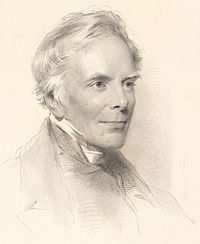
John Keble
John Keble was born in Fairford, Gloucestershire where his father, the Rev. John Keble, was Vicar of Coln St. Aldwyns. He attended Corpus Christi College, Oxford, and, after a brilliant academic performance there, became a Fellow of Oriel College, Oxford, and was for some years a tutor and examiner in the University. While still at Oxford he took Holy Orders in 1815, and became first a curate to his father, and later curate of St Michael and St Martin’s Church, Eastleach Martin in Gloucestershire.
Meantime, he had been writing ‘The Christian Year’, which appeared in 1827, and met with an almost unparalleled acceptance. Though at first anonymous, its authorship soon became known, with the result that Keble was in 1831 appointed to the Chair of Poetry at Oxford, which he held until 1841. Victorian scholar Michael Wheeler calls The Christian Year simply “the most popular volume of verse in the nineteenth century”. In his essay on Tractarian Aesthetics and the Romantic Tradition, Gregory Goodwin claims that The Christian Year is “Keble’s greatest contribution to the Oxford Movement and to English literature.” As evidence of that Goodwin cites E. B. Pusey’s report that ninety-five editions of this devotional text were printed during Keble’s lifetime, and “at the end of the year following his death, the number had arisen to a hundred-and-nine”. By the time the copyright expired in 1873, over 375,000 copies had been sold in Britain and 158 editions had been published. Notwithstanding its widespread appeal among the Victorian readers, the popularity of Keble’s The Christian Year faded in the twentieth century despite the familiarity of certain well-known hymns, e.g. “New every morning is the love.”
In 1833 his famous Assize Sermon on “National Apostasy” gave the first impulse to the Oxford Movement, also known as the Tractarian movement. Along with his colleagues, including John Henry Newman and Edward Pusey, he became a leading light in the movement, but did not follow Newman into the Roman Catholic Church. In 1835 he was appointed Vicar of Hursley, Hampshire, where he settled down to family life and remained for the rest of his life as a parish priest at All Saints Church. He was a profound influence on a near neighbour, the author Charlotte Mary Yonge.
In 1846 he published another book of poems, Lyra Innocentium. Other works were a Life of Wilson, Bishop of Sodor and Man, and an edition of the Works of Hooker. After his death appeared Letters of Spiritual Counsel, and 12 volumes of Parish Sermons. He also wrote hymns, such as “The Voice that Breathed o’er Eden” and Sun of our soul, Thou Saviour dear
Keble died in Bournemouth at the Hermitage Hotel, after visiting the area to try and recover from a long term illness as he believed the sea air had therapeutic qualities. He is buried in All Saints’ churchyard, Hursley.
Keble’s feast day is kept on 14 July (the anniversary of his Assize Sermon) in the Church of England, and a commemoration observed on 29 March (the anniversary of his death) elsewhere in the Anglican Communion. Keble College, Oxford was founded in his memory.
The view from Bulverton Hill, Sidmouth, where Keble was a frequent visitor, is thought to have inspired some of his best loved work. The hill commands a panoramic view of the Lower Otter Valley and Dartmoor in the distance. Folklore suggests that his favourite spot was where a wooden bench known as Keble’s Seat has been in place for many years.


A Jane Austen Sequel: Colonel Fitzwilliam’s Correspondence
Colonel Fitzwilliam’s Correspondence For your enjoyment, one of the Regency Romances I published.
It is available for sale and I hope that you will take the opportunity to order your copy.
For yourself or as a gift. It is now available in a variety of formats.
For just a few dollars this Regency Romance can be yours for your eReaders or physically in Trade Paperback.
Visit the dedicated Website
Barnes and Noble for your Nook or in Paperback
Amazon for your Kindle or in Trade Paperback
Witnessing his cousin marry for love and not money, as he felt destined to do, Colonel Fitzwilliam refused to himself to be jealous. He did not expect his acquaintance with the Bennet Clan to change that.
Catherine Bennet, often called Kitty, had not given a great deal of thought to how her life might change with her sisters Elizabeth and Jane becoming wed to rich and connected men. Certainly meeting Darcy’s handsome cousin, a Colonel, did not affect her.
But one had to admit that the connections of the Bingleys and Darcys were quite advantageous. All sorts of men desired introductions now that she had such wealthy new brothers.
Kitty knew that Lydia may have thought herself fortunate when she had married Wickham, the first Bennet daughter to wed. Kitty, though, knew that true fortune had come to her. She just wasn’t sure how best to apply herself.
Feedback
If you have any commentary, thoughts, ideas about the book (especially if you buy it, read it and like it
August 12, 2016
Regency Personalities Series-Royal Society of Edinburgh
Regency Personalities Series
In my attempts to provide us with the details of the Regency, today I continue with one of the many period notables.
Royal Society of Edinburgh
1783-
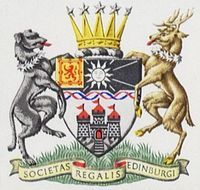
Royal Society of Edinburgh
Royal Society of Edinburgh is Scotland’s national academy of science and letters. It is a registered charity, operating on a wholly independent and non-party-political basis and providing public benefit throughout Scotland. Established in 1783, it has since then drawn upon the strengths and expertise of its Fellows..
The Society covers a broader selection of fields than the Royal Society of London including literature and history. Unlike similar organisations in the rest of the UK, the Fellowship includes people from a wide range of disciplines – science & technology, arts, humanities, medicine, social science, business and public service. This breadth of expertise makes the Society unique in the UK.
At the start of the 18th century, Edinburgh’s intellectual climate fostered many clubs and societies (see Scottish Enlightenment). Though there were several that treated the arts, sciences and medicine, the most prestigious was the Society for the Improvement of Medical Knowledge, commonly referred to as the Medical Society of Edinburgh, co-founded by the mathematician Colin Maclaurin in 1731.
Maclaurin was unhappy with the specialist nature of the Medical Society, and in 1737 a new, broader society, the Edinburgh Society for Improving Arts and Sciences and particularly Natural Knowledge was split from the specialist medical organisation, which then went on to become the Royal Medical Society.
The cumbersome name was changed the following year to the Edinburgh Philosophical Society. Other Founders included William Robertson and the Alexander Monro’s Primus and Secundus. With the help of University of Edinburgh professors like Joseph Black, William Cullen and John Walker, this society transformed itself into the Royal Society of Edinburgh in 1783 and in 1788 it issued the first volume of its new journal Transactions of the Royal Society of Edinburgh.
As the end of the century drew near, the younger members such as Sir James Hall embraced Lavoisier’s new nomenclature and the members split over the practical and theoretical objectives of the society. This resulted in the founding of the Wernerian Society (1808–58), a parallel organisation that focused more upon natural history and scientific research that could be used to improve Scotland’s weak agricultural and industrial base. Under the leadership of Prof. Robert Jameson, the Wernerians first founded Memoirs of the Wernerian Natural History Society (1808–21) and then the Edinburgh Philosophical Journal (1822), thereby diverting the output of the Royal Society’s Transactions. Thus, for the first four decades of the 19th century, the RSE’s members published brilliant articles in two different journals.
The Royal Society has been housed in a succession of locations:
1783–1807 – College Library, University of Edinburgh
1807–1810 – Physicians’ Hall, George Street; the home of the Royal College of Physicians of Edinburgh
1810–1826 – 40–42 George Street; shared with the Society of Antiquaries of Scotland from 1813
1826–1908 – the Royal Institution (now called the Royal Scottish Academy Building) on the Mound; shared, at first, with the Board of Manufactures (the owners), the Institution for the Encouragement of the Fine Arts in Scotland and the Society of Antiquaries of Scotland
Presidents
The Duke of Buccleuch (1783–1812)
Sir James Hall (1812–1820)
Sir Walter Scott (1820–1832)
Sir Thomas Makdougall Brisbane (1832–1860)
The Keith Medal is a prize awarded by the Royal Society of Edinburgh, Scotland’s national academy, for a scientific paper published in the society’s scientific journals, preference being given to a paper containing a discovery, either in mathematics or earth sciences.
The Medal was inaugurated in 1827 as a result of a gift from Alexander Keith of Dunottar, the first Treasurer of the Society. It is awarded quadrennially, alternately for a paper published in: Proceedings A (Mathematics) or Transactions (Earth and Environmental Sciences).
1827: David Brewster
1831: Thomas Graham
1833: James David Forbes
1835: John Scott Russell
1837: John Shaw


Beaux, Ballrooms, and Battles
A new Regency Anthology
Beaux, Ballrooms, and Battles anthology, celebrating the 200th anniversary of the victory at Waterloo in story.
Looks good, huh? The talented writer and digital artist, Aileen Fish created this.
It will be available digitally for $.99 and then after a short period of time sell for the regular price of $4.99
The Trade Paperback version will sell for $12.99
Click on the Amazon Link—>Amazon US

My story in the anthology is entitled: Not a Close Run Thing at All, which of course is a play on the famous misquote attributed to Arthur Wellesley, “a damn close-run thing” which really was “It has been a damned nice thing — the nearest run thing you ever saw in your life.”
Samantha, Lady Worcester had thought love was over for her, much like the war should have been. The Bastille had fallen shortly after she had been born. Her entire life the French and their Revolution had affected her and all whom she knew. Even to having determined who she married, though her husband now had been dead and buried these eight years.
Yet now Robert Barnes, a major-general in command of one of Wellington’s brigades, had appeared before her, years since he had been forgotten and dismissed. The man she had once loved, but because he had only been a captain with no fortune, her father had shown him the door.
With a battle at hand, she could not let down the defenses that surrounded her heart. Could she?
As her father’s hostess, she had travelled with him to Brussels where he served with the British delegation. Duty had taken her that night to the Duchess of Richmond’s ball. The last man she ever expected to see was Robert, who as a young captain of few prospects, had offered for her, only to be turned out by her father so that she could make an alliance with a much older, and better positioned (wealthy), aristocrat.Now, their forces were sure to engage Napoleon and the resurgent Grande Armée. Meeting Robert again just before he was to be pulled into such a horrific maelstrom surely was Fate’s cruelest trick ever. A fate her heart could not possibly withstand.
Here are the first few paragraphs to entice you:
Chapter One
“Come father, we shall be dreadfully late. Already the other guests of the inn have all departed for the ball.” Samantha distinctly heard him grunt. Her father did not like balls.
“You will not fault me if I stay to the card room with the other old gentlemen. We always have much to discuss,” he said. Her father served with the delegation led by Sir Charles Stuart.
In a moment he would complain about the pains caused by his gout. Always handy when social obligations were required and never present when he had his ‘important’ work to do.
“Father, are you sure that there is going to be a battle? I just can’t believe that Her Grace of Richmond is hosting a ball when the soldiers will be going off to fight.” Lady Worcester, who had been once just The Honourable Samantha Villiers, asked of her father, the second Viscount Haddington.
She had married the Earl of Worcester twelve years before, a man who had died before the Peace of Amiens had been shattered. They had no children, and as there were only distant heirs, the property went to those relations whilst the title became extinct. Samantha was the last Lady Worcester.
“The fighting is close at hand, but I have every confidence in the Duke of Wellington. Marvellous man. The French will be quite surprised when he takes this army and invades their lands,” her father said. “I am afraid I shall not be able to stand up and offer one dance with you, my good girl. The pains in my foot are troubling me.”
As Samantha had predicted.
That was always the excuse. Samantha was assured that her father had not once stood up to dance since her mother had died.
Over the many years she had had to study her father, for she had taken to being the hostess of his household upon the death of her husband, her mother having died before her own marriage, she had noted that her father was more impressed by title, position, and wealth, than by capabilities.
However, her own study of Wellesley, now the Duke, paralleled her father’s assessment at least when it came to Wellington’s successes as a commander. Yet the Duke had never faced Napoleon. Until only the most recent years, the Emperor of France had seldom lost any engagement. The Duke of Wellington had faced Napoleon’s lieutenants, and captains, but never the very best commanders of Le Grande Armée.
“It is understandable, Father, with your foot being troublesome, that you wish to proceed to the card room. You should enjoy this night. It will all be over too soon, and as you say, the engagement is imminent. Many here this evening we may never know again.” More than twenty years of war and she had known the loss of several military men.
Her father nodded. He had trained her to recognize the truth regarding these years of war. It was why he had been so against a liaison with Robert Barnes when she had first come out. Her other ardent suitor during her Season in ’03.
A time long ago.
Samantha and the Viscount were in the foyer of their lodgings. All the best places had been taken by those of great rank and wealth. This was a small inn that six other families shared.
She and her father were ready to leave for the ball, their hired carriage at the front of the building even then. Samantha had looked from the window and seen their coachman, Phillipe, waiting patiently.
He was paid for from her Worcester monies. The two years that Samantha had not lived with her father whilst married, had resulted in his losing near all the Haddington monies. He had retained very little of the capital, none of grandfather’s lands, and survived on monies advanced by the government to see to his office as well as what monies Lady Worcester was able to provide to the expenses of his household. Expenses that she managed with prudence.
Shaking her head and exiling the thought away, she pondered on a ball in a coach house. How novel to attend.
She had called on the Duchess several times, as they knew each other socially. Samantha well knew many of the women that had formed society here in Brussels. Her father’s stature with the delegation caused her to be a hostess to much smaller events than the ball.
With the assured defeat of Napoleon the war would end and her father’s service would be over. So also would the service of that other man who had asked for her before.
Robert had gone back to fight once war broke out again when the Peace of Amiens fell apart. She had since lost track of him.
Samantha had forced herself to lose track of him.


August 11, 2016
Regency Personalities Series-Anna Josepha King
Regency Personalities Series
In my attempts to provide us with the details of the Regency, today I continue with one of the many period notables.
Anna Josepha King
1765–1844
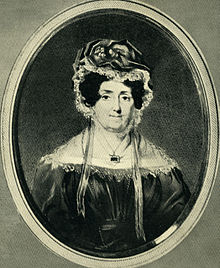
Anna Josepha King
Anna Josepha King was born Anna Josepha Coombe in 1765 at Hatherleigh in Devonshire. At the age of 26 she married her first cousin Philip Gidley King who was a 33-year-old officer in the Royal Navy. He had recently returned from Norfolk Island where he had been in charge of establishing a penal settlement for two years under the direction of Captain Arthur Phillip.
The marriage took place on 11 March 1791 at St Martin in the Fields, London. Only four days later the couple sailed on the frigate Gorgon for Norfolk Island where King was to resume his duties as Lieutenant-Governor of the penal colony. Anna King and the captain’s wife, Mary Ann Parker, were the only women on the outward journey. Parker wrote an account of the voyage which described Mrs. King as her “amiable companion”.
The Kings arrived at Norfolk Island in November 1791 and six weeks later Anna gave birth to her first child Philip Parker King. Life was not easy on the island. Their home which at that time was Government House has been described as a “dilapidated little building twenty four feet by twelve, falling to pieces and unsafe to live in”. Not only did Anna have her own baby to attend to, she was also required to care for two illegitimate children of her husband. These two children named Norfolk and Sydney were born to Anne Innet a female convict who was King’s mistress during his previous term as Governor on Norfolk Island before he married Anna.
Life on the island was very isolated. In 1792, there was no communication for nine months with Sydney, which was their only link with the outside world. News from England, when it did arrive, was often almost 12 months old. Two daughters were born on the island – Anna Maria in 1793 and Utricia in 1795. Utricia died when she was a small child.
Illness plagued both Anna King and her husband during their stay on Norfolk Island. King suffered frequently from gout and other illnesses and in 1795 almost died. The following year he applied for leave to return to England for proper medical advice. In April 1796 the King family sailed aboard the Britannia and then the Contractor for England. During the voyage another daughter, Elizabeth, was born. Over a year after leaving Norfolk Island, the family arrived in England in May 1797.
During the next two years in England King sought to improve his health. He also wanted to find further employment as the Kings were not financially secure. In 1798, it was decided that King would go to New South Wales to succeed John Hunter as Governor in the event of his death or absence from the colony. In the following year, in August 1799, Anna and her husband with their youngest daughter, Elizabeth, sailed in the ship Speedy for Sydney. Their other two children Philip and Anna Maria remained in England with friends to further their education.
During the voyage Mrs King kept a diary a page of which is pictured. In the diary she describes the hardships they endured and the frequent storms and gales they encountered. On 30 March she said:
“It is out of my power to describe half of the melancholy situation we have been in, occasioned by a dreadful gale of wind which began at 12 oclock yesterday – gradually encreasing more and more – at ½ past one this morning it blew so heavy that the Captain took in all sail, but such as was necessary to keep the ship steady – and brought her too – the sea was dreadful which with the wind kept encreasing – at half past four oclock a sea struck and made a breach over the larboard side of the ship carrying away all before it stripped the larboard side of the railings and the boat cranes and all three water casks that was only put there the day before of course all went – every body’s cabin suffered by this dreadful sea. It burst down upon me, and poor Elizabeth, and completely wetted us through bed and all – and the bottom part of the cabin was shoe deep with water – for my part I thought the decks was falling in upon us – and that we was in great danger.” She concludes her diary as follows. “We however arrived safe – to Port Jackson on the 13th of April- and was very happy – to put my foot once more on dry land – and I hope never to take another voyage after arriving again in England – for I am quite sick of the seas.”
The journey took five months. The Kings arrived at Port Jackson in April 1800. Hunter still occupied Government House so at first they stayed with friends. King did not become Governor until five months later when Hunter left for England. He saw his new role as a reformist and his first task was to break the control of monopolist traders in the colony and the traffickers in liquor.
The Kings moved into Government House at Parramatta when Hunter departed. Mrs King was the first Governor’s wife in New South Wales as Governor Phillip had left his wife in England and Governor Hunter was unmarried.
One of first tasks undertaken by Governor King was to establish an institution for orphan children. Anna King took a particular interest in this and was one of the six members of the Committee appointed to set up the building. It was opened in 1801 and although it was officially called The Female Orphan Institution informally it was known as Mrs King’s Orphanage. It is shown in the picture (left). It is the central red brick building.
From 1800 until 1806 Anna played the part of Governors wife being the hostess and friend to those who were influential. In 1805 she gave birth to another daughter Mary so that now she had two daughters living with her in Sydney (Elizabeth and Mary) and one daughter Anna Maria and one son Philip Parker King who were still at school in England. However, by 1806 King’s health deteriorated and at his request he was replaced by William Bligh who was an officer in the British Navy. Soon after his arrival Bligh made a grant of 790 acres (3.2 km2) of land to Anna. The land was situated at the junction of Rope’s Creek and South Creek near the now suburb of Rooty Hill, NSW.
In February 1807 the King family left New South Wales to return to England. They arrived in November 1807 and soon after King became ill once more mainly with gout. Although he was only 49 he realised he could no longer work and applied for a pension. Unfortunately King died in September 1808 before the pension was granted and Anna was left in difficult financial circumstances. She sought financial assistance from the Secretary of State and eventually was granted a small life annuity. Her land in NSW was an additional source of income. Since her departure from Sydney, it had become quite productive as in 1810 Governor Macquarie made the following comment in a report.
“to Mrs. King’s Farm on the Right Bank of the South Creek; where we halted for a short while to look at her fine numerous Herds of Horned Cattle, of which she has upwards of 700 Head of all descriptions. — Her agent Mr. Hassall was here for the purpose of shewing them to us, and we found them in very high condition.”
During the time that Anna was in England between 1807 and 1832 all of her children married. In 1812, Anna Maria married Hannibal Hawkins Macarthur who had already settled in NSW but was staying in London for a short visit. The couple returned to NSW after their marriage and resided at Hannibal’s recently purchased farm near Parramatta called “The Vineyard”. In 1817 Philip married Harriet Lethbridge and went to live in Sydney for some years but returned in 1822. In 1826 Mary married the brother of Harriet, Robert Copeland Lethbridge and they too decided to emigrate to NSW. Harriet decided to accompany them with her children alone as Philip had been ordered to command a ship for several years. Elizabeth married Charles Runciman a well known London artist soon after this and was the only one of Anna’s children to remain in England.
In 1832 her son Philip decided to retire from the Royal Navy and return to NSW to reunite with his wife Harriet. Anna decided to accompany him and was met at the dock in Sydney by her son in law Hannibal Macarthur and taken to their home “The Vineyard” to live. She remained here for the rest of her life.
One of her interests was the building of a local church and in 1837 her son Philip acquired 2 acres (8,100 m2) of land and donated it so that St Mary Magdalene Anglican Church could be built. It was designed by Francis Crick and was completed in 1840. When Anna died in 1844 she was buried here. In 1988 the descendents of the Kings arranged for the tombstone of her husband Philip Gidley King to be brought to Australia where it was placed in an enclosure next to Anna’s grave


1st book in the Masqueraders Chocolate House series
I and five others have released the first in what could turn out to be a few, an anthology centered around Bath of the Georgian and Regency period. All proceeds go to charity, specifically the Great Ormond Street Hospital.
The Chocolate House
All For Love
[image error]
Our Authors are noted and award winning storytellers in the genre of Georgian and Regency era Historical Novels:
David W Wilkin
Francine Howarth
Giselle Marks
Jessica Schira
Susan Ruth
Elizabeth Bailey
A Sensual blend of Chocolate, Romance, Murder & Mystery at “Masqueraders”.
The beautiful City of Bath, famous for its Roman Spa, its Abbey, its Pump Room & Assembly Rooms, and Sally Lunn’s bun shop, is a place made famous within the literary world by the likes of Jane Austen, Georgette Heyer, and other authors of Georgian and Regency historical novels. Thus Bath is renowned as a place for intrigue and romance, but few readers will have stepped across the threshold of Masqueraders’, a notorious and fashionable Chocolate House, that existed within the city from 1700 to the latter part of the reign of William IV. What happened to it thereafter, no one knows, for sure. Nor does anyone know why Sally Lunn’s bun shop disappeared for decades until it was rediscovered.
So it could be said, essence of chocolate drifting on the ether denotes where the seemingly mystical Masqueraders’ once existed, and it is that spiritual essence that has brought authors together from around the globe, to pen a delightful collection of Georgian & Regency romances, that are, all, in some way, linked to The Chocolate House. We sincerely hope you will enjoy the individual stories, and be assured all the royalties earned will be donated to Great Ormond Street Hospital for Children, London.
The stories:
A Rose by Any Other – Giselle Marks.
A Fatal Connection – Elizabeth Bailey
The Runaway Duchess – Francine Howarth
Death at the Chocolate House – Susan Ruth
A-Pig-in-a-Poke – Jessica Schira
A Little Chocolate in the Morning – David W. Wilkin.
My story (As the author and owner of this Blog, I feel I can tell you more) is the story of Charles Watkins the Marquis of Rockford (for those who want the nitty gritty, ask and we can discuss the very specific creation of name details that went into this) who has recently come into his title and estates, his father dying just about a year before. Now he is to return to London after his mourning is over to use his seat in the House of Lords in aid of the war against Napoleon. He is not in Town to seek a bride though the dowager Marchioness should like that he attain one.
No, certainly not the schoolmate of his younger sister Emma, Lady Caroline Williamson, the daughter of the Earl of Feversham. A girl as young and silly as his sister, he would never wed, and certainly not fall in love with. But rescuing her from the clutches of a man who was old enough to be his own grandfather, that he could do with ease, and perhaps Panache.
Available at Amazon Digitally for your Kindle for $2.99 or Physically in Trade Paperback


August 10, 2016
Regency Personalities Series-Major Sir George Gipps
Regency Personalities Series
In my attempts to provide us with the details of the Regency, today I continue with one of the many period notables.
Major Sir George Gipps
1791 – 28 February 1847
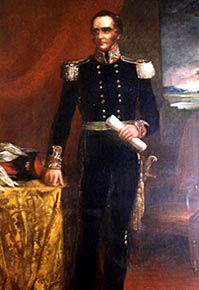
Major Sir George Gipps
Major Sir George Gipps was born in 1791 at Ringwould, Kent, England, and was the son of the Rev. George Gipps. He was educated at The King’s School, Canterbury, and at the Royal Military Academy, Woolwich.
In 1809 he joined the Royal Engineers and served in the Peninsular War as well as elsewhere in Europe (although he missed the Battle of Waterloo due to his posting in Ostend, Belgium where he was preparing fortifications).
In 1824 he joined the Colonial Service and served in the West Indies. He married Elizabeth Ramsay, the daughter of Major-General George Ramsay, in 1830. He and his wife had a son, Reginald Ramsay Gipps, who later became a general in the British Army.
In 1834, Gipps became Private Secretary to the First Lord of the Admiralty, Lord Auckland; and, a year later, he was sent to Canada as a Commissioner, together with the Earl of Gosford and Sir Charles Edward Grey, to examine grievances there. He was knighted, promoted to the rank of major, and returned to England in April 1837. He was appointed Governor of New South Wales on 5 October 1837, and arrived at Sydney on 23 February 1838.
This was a transition time for the settlement of Australia, with moves to bring settlers under the umbrella of responsible government, and associated limitations on land squatters. Gipps was greatly concerned about educational provision in the colony, as well as the implications of the end of transportation.
In 1844, less than half of the children in the Colony received any form of education, whether public or private. There was great controversy on whether to continue to subsidise denominational schools, which gave rise to educational sectarianism and was fairly inefficient, or to promote national schools, fully funded by the government. The major objections to any alternative schemes came from the Church of England and the matter was unresolved before he left.
One of Gipps’ major tasks was to try to keep settler squatters within “boundaries of location” defined previously. A part of his stance, other than that of official policy, derived from the manner in which the settlers treated Aborigines as their lands constantly spread out. Examples of this were the Myall and Waterloo Creek Massacres, where in 1838, 100 – 300 Aboriginal people were massacred on two separate occasions by squatters. This horrified Governor Gipps, and seven men were hanged for their part in the Myall Creek massacre.
As a partial result of this, and his inability to suppress vigilantism against Aborigines, in April 1844 Gipps issued regulations which required a licence fee of £10 a year from graziers, limited the area of most stations to 20 square miles (52 km2), and specified that no single licence covered a station capable of depasturing more than 500 head of cattle and 7000 sheep. This brought a storm of protests from the squatters and led to the foundation of the Pastoral Association of New South Wales, the resulting controversy continued until his departure.
Further difficulties in administering further-flung settlements continued because of the huge distances involved, difficult travel, and the lack of willingness of possible representatives to spend some time in Sydney for these purposes.
In 1839, Gipps had his commission altered by Letters Patent and was reappointed as Captain-General and Governor-in-Chief in and over the territory of New South Wales, the new boundaries of which included any land that might be acquired in sovereignty in New Zealand. William Hobson was also appointed Deputy Governor in 1839, and set sail for New Zealand in January 1840. Sydney merchants had been engaging in great speculation in Māori lands. As a result, the day after Hobson’s departure, Gipps proclaimed that no title to land henceforth purchased in New Zealand would be recognised unless derived from a Crown grant. This is undoubtedly the origin of a similar provision in Article Two of the Treaty of Waitangi, as part of Hobson’s remit for “securing British sovereignty over New Zealand by the negotiation of a Treaty between Māori and the Crown”.
Until permanent arrangements could be put in place, the New South Wales Legislative Council enacted all applicable New Zealand law, and the New South Wales Land Regulations were also extended to New Zealand. Small grants were also provided, and Gipps provided an advisor and a small military detachment to take control in the possible event of Hobson’s incapacity. Most of the day-to-day administration was carried out by Hobson, while Gipps retained control only of matters to do with the Imperial Prerogative. This arrangement ended in May 1841, when New Zealand became a Crown Colony in its own right.
Transportation ended in 1843, much to the chagrin of the big landowners, who thus lost a large source of cheap labour. Gipps was largely in favour of free immigration financed by the government, but he also consented to a continuation of the bounty system. There was also a three-year drought, which resulted in a dearth of work for assisted settlers. Land values fell, leading to further vilification of his governorship by large landowners and other interested parties.
While being extremely conscientious and fair-dealing in his governorship, Gipps’ health was broken down by overwork and the constant invective from the settlers. His appointment had been extended for another two years after the original six, due to the high regard the Colonial Office held him in. Gipps did not wait for his successor, Charles Augustus FitzRoy, to arrive, departing Sydney in July 1846. He arrived in England in the November, and died at Canterbury of a heart attack on 28 February 1847.




